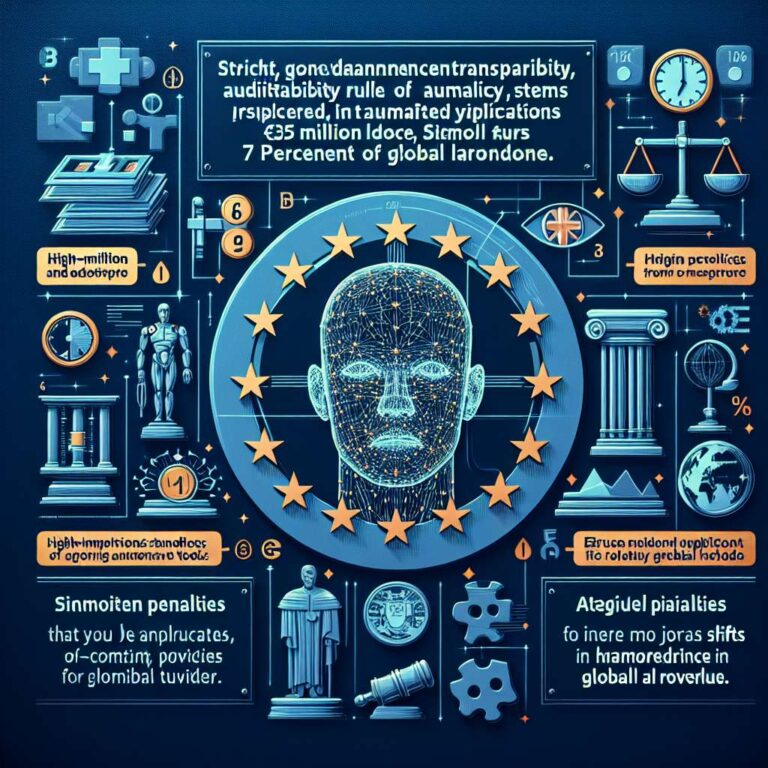The European Union’s artificial intelligence act is reshaping how companies build and deploy automated systems, classifying applications by risk and imposing the toughest requirements on high-impact use cases like hiring and medical diagnostics. High-risk systems must meet strict data governance and human oversight standards, undergo risk assessments, and remain auditable. The law’s rollout began in August 2024, with bans on prohibited practices such as social scoring taking effect in February 2025. Full enforcement is slated for 2026, and violations can draw penalties of up to €35 million or 7 percent of global annual turnover. The framework applies extraterritorially to any provider placing artificial intelligence systems on the EU market, positioning the bloc as a leader in trustworthy artificial intelligence focused on transparency and accountability.
Implementation guidance is evolving. In July 2025, the European Commission issued draft guidelines for general-purpose artificial intelligence models, clarifying expectations for versatile systems such as chatbots. Experts highlight a stepped timeline, with high-risk rules following in August 2025 and additional obligations taking shape through codes of practice. Small and medium-sized enterprises face resource constraints, but the EU’s regulatory sandboxes aim to lower adoption barriers. Practical playbooks recommend mapping artificial intelligence use cases, assigning compliance leads, and prioritizing bias mitigation, especially in tools like CV screeners that fall under high-risk classifications.
Industry reaction is mixed, balancing concerns about innovation with support for stronger safeguards. Major platforms including Google and Meta are ramping compliance efforts amid the prospect of significant fines, with viral analyses on X illustrating potential exposure based on revenue. Consultancies are advising on governance integration, while the EU artificial intelligence office expands oversight capacity and promotes a code of practice. For general-purpose artificial intelligence, recent guides emphasize systemic risk evaluations, including considerations for models deployed ahead of the act’s full force referenced for 2027 in cited materials.
The act’s influence extends beyond Europe. According to legal and industry analyses cited in the article, the United States has shifted toward enabling artificial intelligence under its 2025 action plan, rolling back earlier safety orders, while China’s emphasis on transparency reflects converging principles. This global ripple effect suggests emerging opportunities for harmonized standards that could ease cross-border operations for compliant providers.
Looking ahead, businesses must navigate unsettled areas such as transparency requirements for foundation models and leverage whistleblower protections linked to the 2019 directive to surface risks. Checklists and diagnostic tools, including the EU artificial intelligence act compliance checker, offer a starting point, but sustained compliance will require lifecycle documentation, continuous monitoring, and readiness for audits. With enforcement ramping toward 2026, organizations that embed governance early stand to build trust and differentiate in increasingly regulated markets, aligning with the European Parliament’s view that the law protects citizens while enabling ethical artificial intelligence growth.

